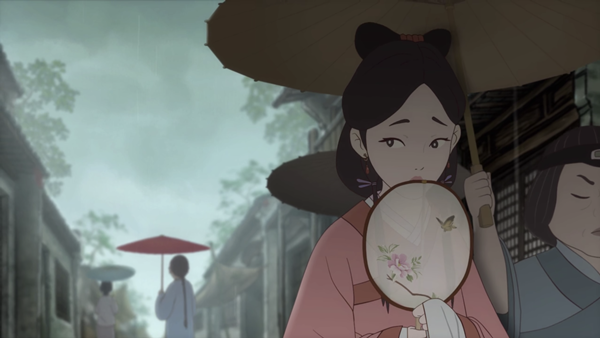Anime, Japanese animation, has long been popular internationally. Anime series such as Dragonball Z and Sailor Moon gained popularity in North America after being broadcast on Cartoon Network’s Toonami lineup in the early 2000s. Hayao Miyazaki’s feature length animated films have set global box office records, topped only by the recent Demon Slayer the Movie: Mugen Train. Demon Slayer: Kimetsu No Yaiba, upon which the blockbuster film is based, and other popular anime like Naruto and My Hero Academia have benefitted from being streamed globally on popular platforms like Hulu and Neftlix. However, these same streaming platforms have also contributed to the rise of donghua: Chinese animation.
The Early Days of Chinese Animation
The pioneers of early donghua were the Wan brothers, who founded Great Wall Film Company in 1926. They produced a number of short films, and the first Chinese feature length animated film, Princess Iron Fan. The animation style was heavily influenced by Western animation of the period like Disney and Betty Boop shorts, which were especially popular in the affluent, cosmopolitan Shanghai. Princess Iron Fan was inspired by Chinese mythology, a formula which informed much of the Wan brothers’, and other Chinese filmmakers’ work. The Wan brothers once again riffed on Chinese mythology for their 1960s epic, Havoc in Heaven, released in parts between 1961 and 1964. It is an adaptation of the myth of the Monkey King, Sun Wukong, a perennial favorite character in Chinese art, literature, and opera. Havoc in Heaven’s animation drew heavily from the imagery of Chinese opera, and in other features they drew inspiration from traditional Chinese line art.
China’s animation industry enjoyed prestige throughout the early to mid 20th century, but came to an abrupt halt in the 1960s during the Cultural Revolution. During this period, the Mao Zedong regime stringently curtailed China’s art and culture, forbidding influences that conflicted with its values.
Animation Renaissance
The animation industry slowly started to recover upon the end of the Cultural Revolution. In 1979, the film Nezha Conquers the Dragon King was released by Shanghai Animation Film Studio. Following the Wan brothers’ mold, the film tackled a popular mythological figure, the rebellious warrior god Nezha. As new technology developed, China’s animation industry took advantage of it to recoup its losses. Adobe Flash allowed amateur animators to create Webtoons, and host them online. CGI animation caught on in China in the 21st century, leading to films like DragonBlade: the Legend of Lang.
Big Fish and Begonia
In 2016, the Chinese animated film industry unleashed its most ambitious project for international consumption of the modern era. Big Fish and Begonia began as a crowdfunded labor of love for its animators. The project received backing from a major film studio, and after many years of laborious work, the visually stunning animated fantasy epic was released to critical acclaim and international box office success. Based on a version of a Chinese myth attributed to philosopher Zhuangzi, the film follows the formula of earlier donghua like Havoc in Heaven and Nezha Conquers the Dragon King in drawing its plot and imagery from mythology. The heroine, Chun, is a young Taoist goddess who falls in love with a human fisherman, and risks grave consequences to her world by obstructing time and nature’s laws to save his life. The dream-like, gorgeously rendered animation and fantastical storyline were meant to rival Studio Ghibli blockbusters like Spirited Away, and solidify Chinese animation as artistically valuable.
Xian Xia and Donghua
In the 2020s, the boom in popularity of xian xia webnovels has also aided the donghua industry, and bolstered its international popularity. Mo Xiang Tong Xiu’s novels Heaven’s Official Blessing and Grandmaster of Demonic Cultivation have been adapted into popular donghua. Netflix features another donghua adapted from a webnovel, The Daily Life of the Immortal King by Kuxuan. The story brings a modern touch to xian xia, placing its cultivators in a modern, high tech milieu that resembles modern Beijing.
Conclusion
Due to government restrictions, the once booming and innovative Chinese animation industry shuttered. Gradually, it has reemerged using modern technology, but retaining links to the past. Like the Wan brothers’ work, modern offerings like Big Fish and Begonia and the animated adaptations of Mo Xiang Tong Xiu’s novels tell fantastical stories with thematic and visual references to China’s distinct myths and cultural heroes.
If you liked this article, you might also like this one on Wuxia – Chinese martial arts movies.
More From LWOS Life
Make sure to stay tuned to LWOS Life for more on this and other stories from around the world of entertainment, culture and more, as they develop. You can always count on LWOS Life to be on top of the major news in the world of entertainment; whilst also providing you with editorials on everything from beer to movie reviews.

